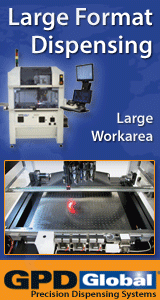Printed Circuit Board Assembly & PCB Design Forum
SMT electronics assembly manufacturing forum.
- SMTnet
- »
- Electronics Forum
- »
- Stencil-PCB Alignment Mehods - Printing process
Stencil-PCB Alignment Mehods - Printing process
Views: 9008
![]() Dear All,
I am a totally new to the SMT process. In fact...
- Dec 09, 2011
by
AlexanderB
Dear All,
I am a totally new to the SMT process. In fact...
- Dec 09, 2011
by
AlexanderB
![]()
![]()
![]() Can you use the equipment manual as the basis for learning h...
- Dec 09, 2011
by
davef
Can you use the equipment manual as the basis for learning h...
- Dec 09, 2011
by
davef
![]()
![]()
![]() You can also use a portable measuring microscope to check yo...
- Dec 11, 2011
by
Darby
You can also use a portable measuring microscope to check yo...
- Dec 11, 2011
by
Darby
![]()
![]()
![]() About the automated printing machines:
They are all a lit...
- Dec 16, 2011
by
kelley
About the automated printing machines:
They are all a lit...
- Dec 16, 2011
by
kelley
![]()
- SMTnet
- »
- Electronics Forum
- »
- Stencil-PCB Alignment Mehods - Printing process







